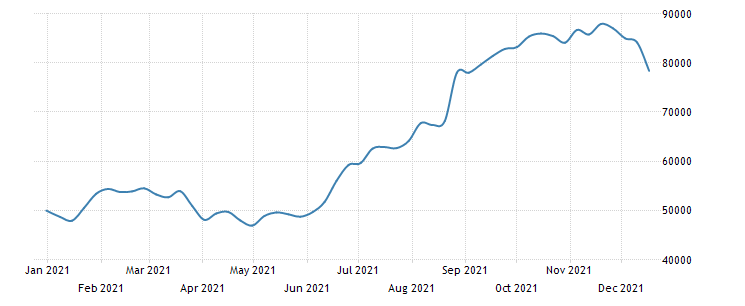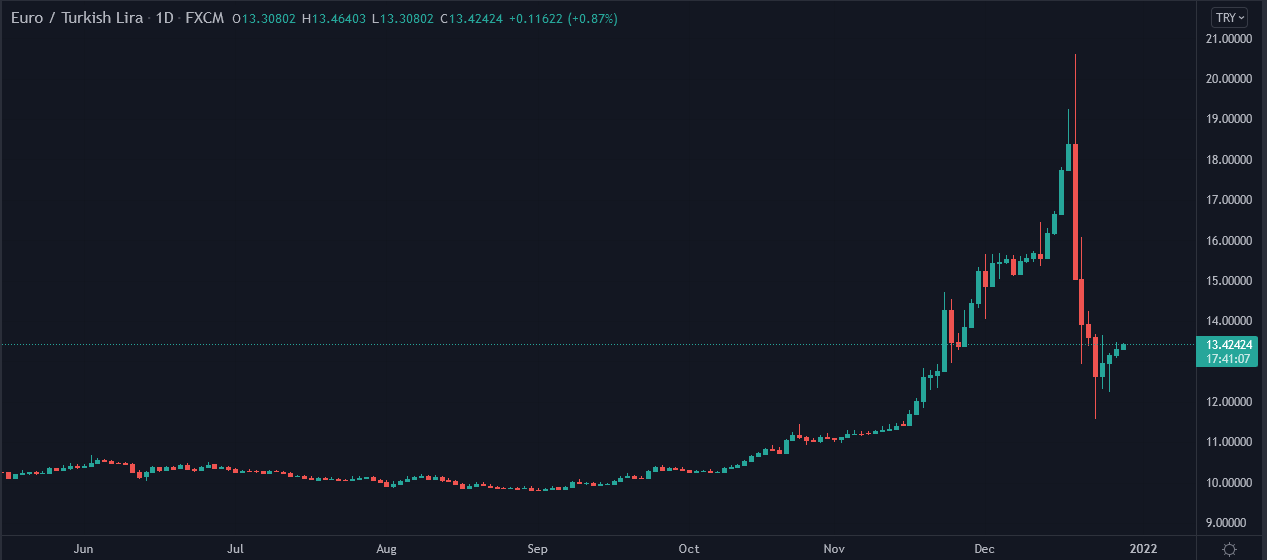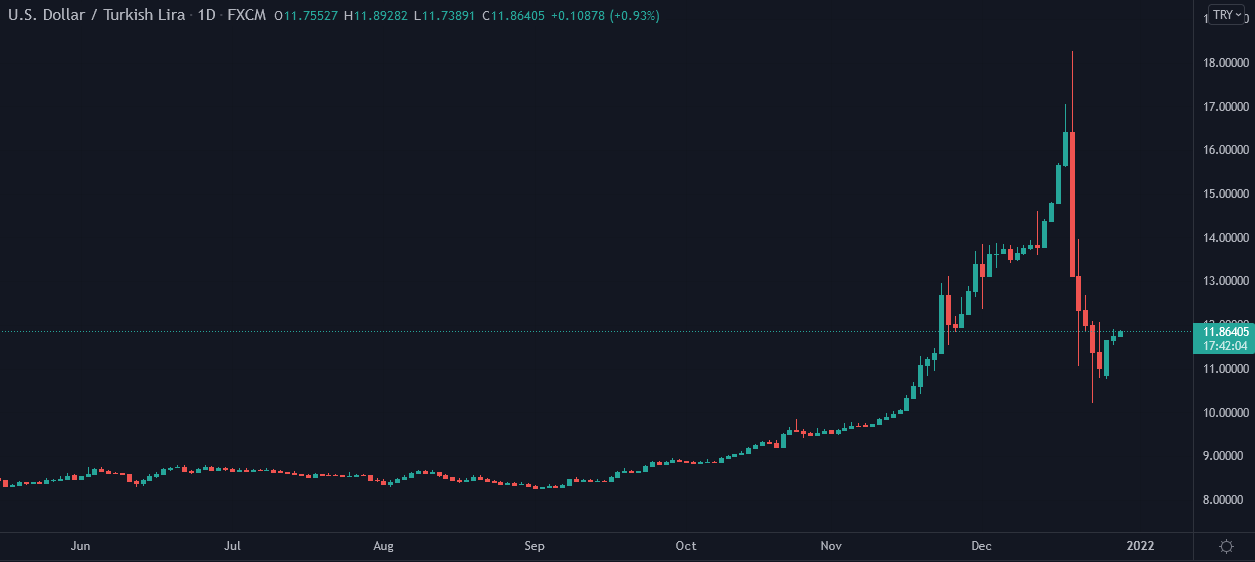The deterioration of the Turkish lira and its decline to unprecedented levels
29/12/2021
The Turkish lira has recently witnessed a decline in its value against all currencies, as it lost nearly half of its value this year with the continuation of the financial policies that led to this collapse. Foremost of which is the insistence of President Recep Tayyip Erdogan and the giving of orders to reduce the interest rate more than once in the previous period, while keeping in mind that Inflation rates have recently exceeded 21% and the world's largest banks have raised interest rates and even addressed letters to Turkey to raise interest rates to counter inflation. However, this was in vain. This affected the price of the Turkish currency negatively, where it led to its value falling by over 8% in less than a month.
This raises an important question; why does the Turkish president insist on reducing the interest rate with unparalleled determination?
From his point of view, the Turkish president is heading to reduce the interest to not deal with it at all in the future. He is relying on the strength of the Turkish economy and his orientation to major investment projects that will make Turkey become not only self-sufficient, but also one of the first countries that completely depend on its own economy.
Of course, this decision will cost heavy costs Turkey in the coming years whether in terms of the stability of the price/value of the currency, or the continuity towards a greater decline in its value, but according to Erdogan’s point of view, this is the solution to make the establishment of a strong state, economically and politically, possible.
On the other hand, from the point of view of the economy, the rise in inflation rates is faced with an increase in the interest rate, which creates an increase in citizens’ demand for the currency and thus leads to a decrease in the inflation rate and an increase in the price of the currency against other currencies.
The currency fell against the Euro and the US Dollar at different rates, as the US Dollar exchange rate reached 18.31 Turkish liras, and the Euro exchange rate reached 20.66 Turkish liras. This decline negatively affected the living conditions of citizens, as the value of their savings decreased due to inflation, which directly affects the companies importing from abroad, because they pay more money for goods and services. This in turn led to an increase in the prices of goods and services, and all of this leads to an increase in inflation rates and thus a decrease in the price of the Turkish lira.
After the Central Bank of Turkey intervened several times by pumping nearly $6 billion from foreign reserves to stop the lira’s decline, it affected the state’s cash reserve where it decreased from $84,150 million to $78,370 million within just a week as the following chart which shows cash reserve levels of the state’s dollar.

The US dollar exchange rate fell to 10.20 Turkish liras and the Euro exchange rate fell to 11.57 Turkish liras, as shown in the following charts:


This raises a question: Will the strength of the Turkish lira continue during the coming period, or is this strength temporary?
Economic experts expect the Turkish lira to continue to decline in the light of these events, where the Euro exchange rate is expected to reach 18.5 Turkish liras and the US dollar exchange rate to reach 16.5 liras, if not more.
This means that the current strength of the lira is only temporary and is a result of the impact of the Turkish Central Bank's pumping of the hard currency into the market.


